What does echinacea look like and how to grow it?

A long-term plant called Echinacea belongs to the Asteraceae genus. The culture has a very attractive appearance, it is subdivided into many interesting varieties. In today's article, we will learn what echinacea looks like and how to properly grow this original flower.
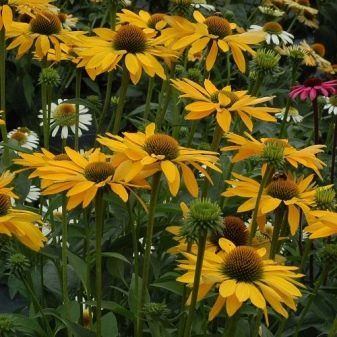
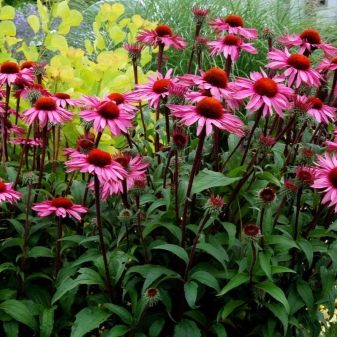
What it is?
Echinacea is a perennial herb that belongs to the rhizome category. Let us examine some of the features of the description of this culture. Echinacea is characterized by straight stems with a rough surface. Their height can reach marks from 1 to 1.5 m. The foliage located in the root zone most often develops wide, oval in shape. The edges of the leaf plates have pronounced notches. The foliage is attached to long stalks. Stem leaf blades are characterized by a lanceolate shape. They are located alternately. They can be seated or standing.
The inflorescences of the beautiful plant in question are made up of large-sized baskets. Those, in turn, consist of marginal ligulate flowers. The color of the latter is different. Red, white and pink shades look especially attractive and bright. As for the middle flowers, they differ in their tubular shape. They are characterized by red-brown and dark red shades. Echinacea fruits are presented in the form of testes with four faces.
An attractive perennial flower that grows well in a wide variety of conditions. So, in its place of origin (North America), the culture feels especially comfortable on the prairies and on the sandy banks of rivers.


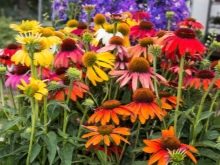
Types and varieties
There are many very beautiful and unusual species and varieties of the beautiful echinacea. Let's take a closer look at some of the popular specimens and their features.
Narrow-leaved
This interesting plant comes from Texas and Minnesota. It got its name due to the special lanceolate structure of the leaves. In the latter, 5 veins are provided. The average height of the narrow-leaved echinacea bush is 80 cm. On the neat flower baskets of the narrow-leaved type, there are pubescent petals. They have a beautiful pink color. The Echinacea species is very hardy, capable of growing for 5 years in the same place in conditions of group plantings.
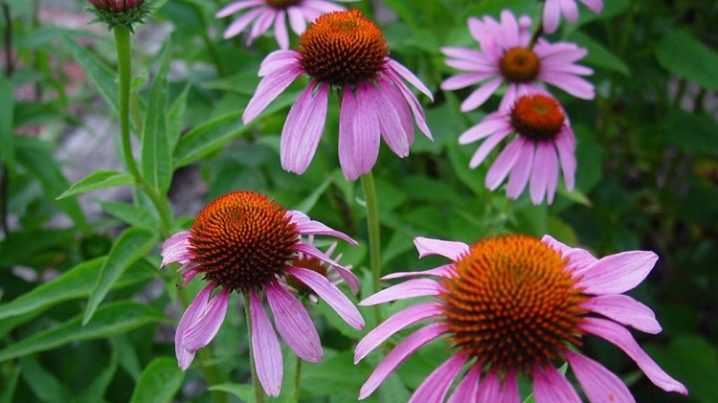
Pale
An interesting and rather tall species of Echinacea. Mature and healthy plants in height may well reach the 1.5 m mark. Of course, the species can reach maximum growth values only in favorable conditions for its life. Pale Echinacea leaves and shoots have a unique grayish tint. The value of the diameter of pink and lilac flowers here can reach 6 cm.
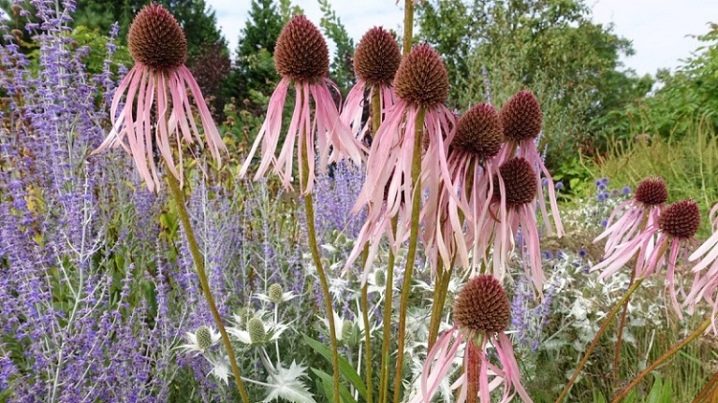
Strange
This type of echinacea contains all the most non-standard and unusual. The plant is characterized by the presence of hollow stems. Petal plates of a strange variety are directed downward. The foliage of the culture has an oval structure, has a very interesting and attractive color.
Despite its original features, the strange echinacea is one of the most hardy plants. Such a culture can very easily adapt to the most varied conditions in which it is found.
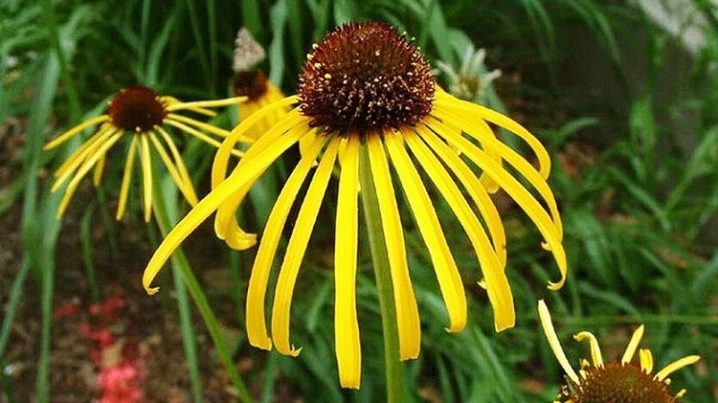
Purple
And this beautiful plant belongs to the category of medicinal. The stems of purpurea echinacea are the simplest. In height, the species can reach 100 cm. In some cases, purple flowers stretch to even more impressive parameters, reaching a mark of 1.5 m.
The considered variety of Echinacea is characterized by a very powerful root system. Leaf plates of purple flowers are quite wide, having a lanceolate structure. The inflorescences are large, basket-shaped. The diameter of the latter can be up to 12 cm.
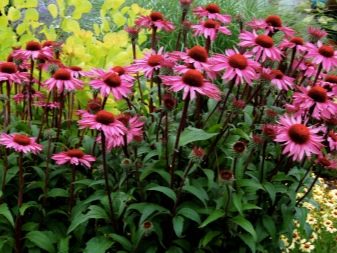
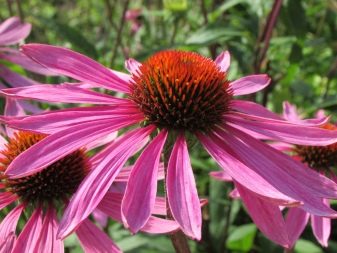
There are many spectacular varieties that belong to the purple look.
- One of them is White Swan. The plant is very beautiful and hardy, blooming from July to August. The height of an adult planting can reach 90 cm. The diameter of the flowers, as a rule, is no more than 12 cm. The petals in large inflorescences are painted in an attractive snow-white shade. By itself, the White Swan bush grows compact and decorative.
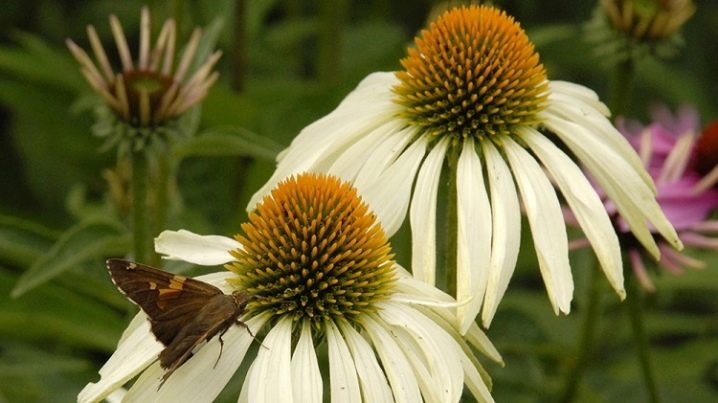
- "Double Decker" Is another popular purple variety. The inflorescence size of this variety is medium. The variety itself is light-loving, it looks especially impressive in conditions of group plantings. Double Decker bloom begins in June and ends in September. The maximum height of this variety is 50 cm.

- The variety "Prima Donna White" belongs to the purple species. This plant appears to be a very bright and spectacular perennial, which is hard not to pay attention to. The variety forms a dense and strong bush, the height of which is no more than 100 cm. The stems grow upright, have a rough surface. Inflorescences are formed in the form of neat baskets, the diameter of which can be from 10 to 12 cm.
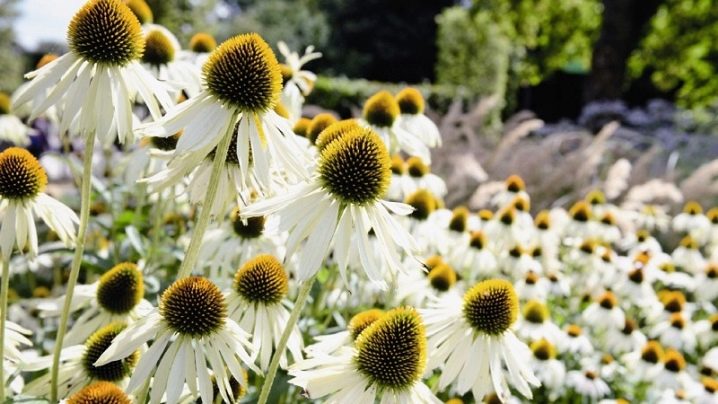
- The Flamingo variety looks no less colorful. Adult plants belonging to this variety can be 60 cm high. The diameter of the flowers is 6 cm. An attractive crop blooms from July to September. The crown of this green handsome man is rarely more than 50 cm. Flamingo flowers have a very delicate and aesthetic pink color.
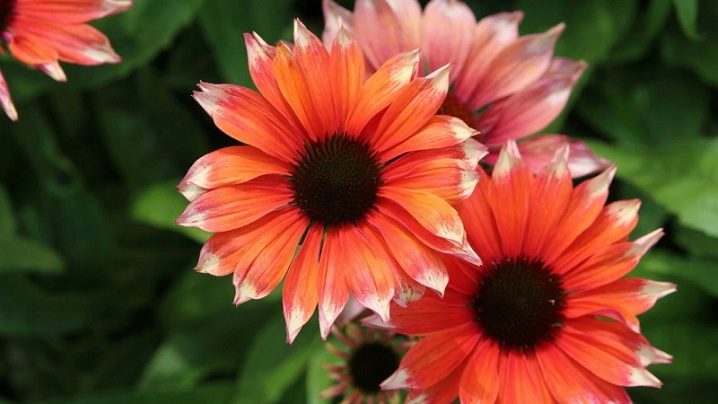
- "Coconut lime" - Another original variety of purple echinacea. The height of this plant usually ranges from 60 to 80 cm. Loves to grow in sunny areas. The culture can boast of good winter hardiness, since it is able to withstand temperature drops down to -29 degrees Celsius.
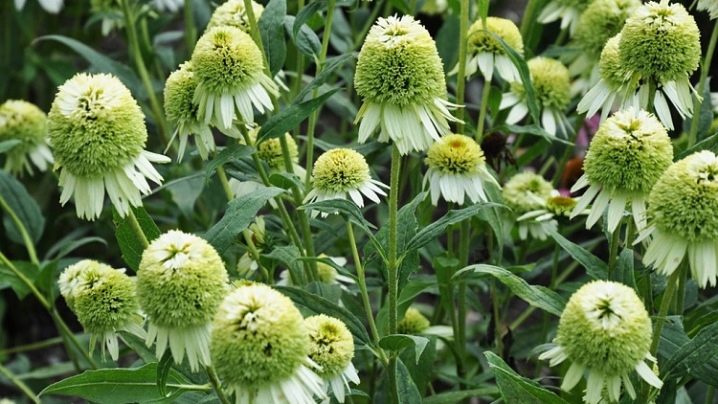
- A very popular purple variety called "Secret Affair"... It is a short and compact shrub with very good branching. The plant produces beautiful double flowers in the shade of a Bengal rose.

- The variety "Carrot cake" is characterized by special beauty. It has coral orange flowers that have a double convex basket. They also have a contrasting dark center. The petals of the plant seem to be lowered downwards, neatly framing the basket. The flowering of the variety is long-lasting and very abundant. This period lasts from July to September.
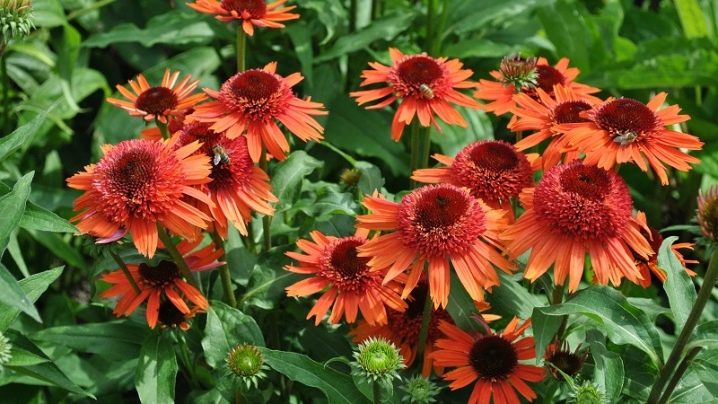
- The purple variety "Virgin" is elegant. The plant, which is given the indicated name, is a spectacular and well-branched bush, the height of which ranges from 45 to 60 cm. The flowers of the variety have neat white petals, as well as a green center. Basket-shaped inflorescences can reach a diameter of 12 to 15 cm.
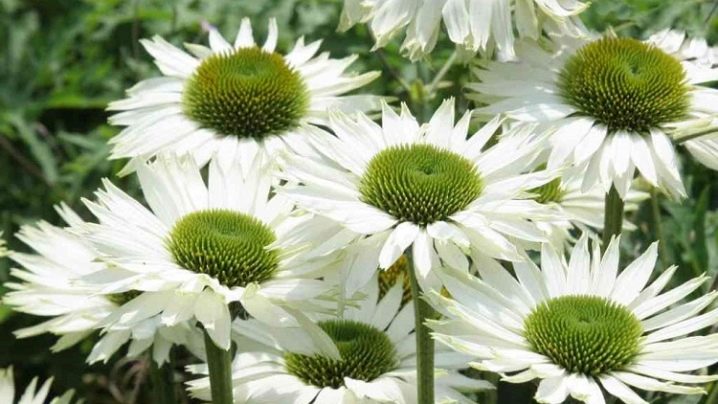
- "Red Pearl" - one of the brightest and most variegated varieties of purple echinacea. It attracts attention with large-sized and very lush flowers of a scarlet hue. The culture has dense and strong peduncles above the bush. The plant can look very good both as a single bush and against the background of group plantings.

- "Blackberry Traffle" - a beautiful purple perennial that can grow up to 80 cm. Inflorescences, which are fully ripe, can reach 10 cm in diameter. They are characterized by an elegant pink pompom, decorated with a brown crown. The culture is characterized by graceful purple petals.Blackberry flowers stand out very clearly against the background of brown stems and green foliage. A single shrub can produce up to 30 bright inflorescences.
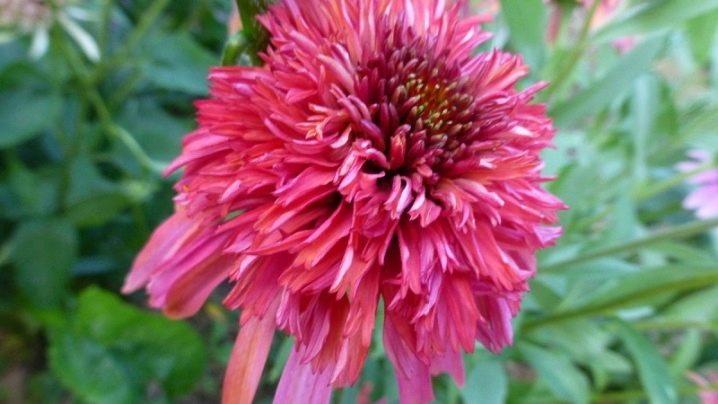
Tennessee
On average flower beds, this type of echinacea is found only in exceptional cases. It is especially widespread in the wild. The plant belongs to the unpretentious category. Tennessee Echinacea can easily tolerate a wide variety of conditions.
The average height of the species under consideration is 80 cm. The diameter of the inflorescences rarely exceeds 8-9 cm. The petals are narrowed and rare, with a pleasant pale pink color. The middle of the flowers is flat, almost black in color. Most often, Tennessee Echinacea grows in well-lit areas.
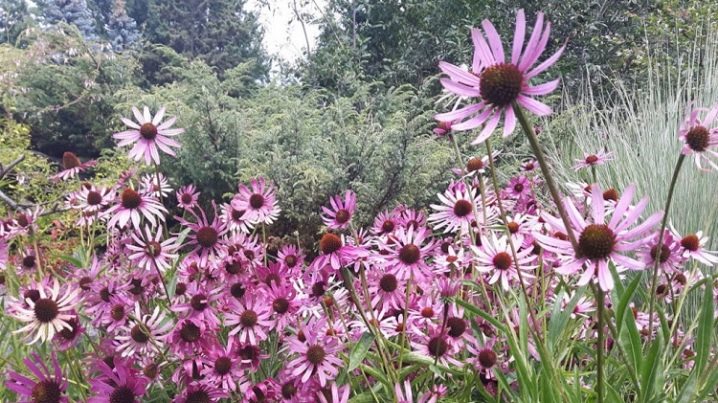
Other
There are other interesting varieties of Echinacea. They also have their own characteristics and distinctive features.
- Dark red. A very beautiful type of echinacea. It attracts attention with large petals painted in rich and dense shades of red and burgundy. The height of the plants under consideration varies, but most often reaches 1.4 m. The culture is characterized by high decorativeness and expressive flowers, which can reach 35 mm in diameter.

- Terry. A spectacular perennial plant, the stems of which can grow up to a mark of 75 cm. The culture attracts attention with large-sized flowers, which consist of a double brown pom-pom, as well as yellow-orange petals. The plant forms a spectacular fluffy shrub that can thrive equally well in shade and sun.
These are not all the varieties of the beautiful echinacea. Also, breeders have bred other curious species, such as echinacea red, smoothed, stimulating, paradoxical, and so on.

Landing
In open ground, the plant is best planted in the fall or spring seasons. Echinacea can be grown using seeds or vegetatively. For disembarkation, you must choose a well-lit place on the site. The soil in which the culture will grow must contain a sufficient amount of alkali. If the soil is acidic, then this situation can be corrected by means of lime. Moistened soil will not be suitable for planting echinacea.
Let's figure out the main features of how to plant echinacea.
- When planting seedlings, the depth of the holes for them should be about 50 cm.At the same time, gaps between the plants should be at least 30 cm.
- The previously dug hole should be deep enough to accommodate the roots of the flower.
- Echinacea should be planted only after pre-fertilizing the soil with compost. After planting, the flower will definitely need to be watered.
- Echinacea can be grown in special containers, however, immediately after the appearance of the first shoots, the flower can be transplanted into the prepared hole, not forgetting about the earthen coma.
It is important to transplant as carefully as possible so as not to accidentally damage the roots: this can adversely affect the condition of the flower.
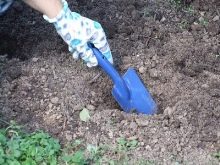
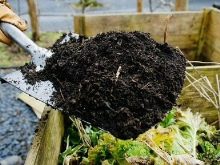
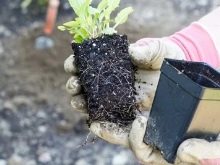
Care
Growing echinacea in the country or at home provides for certain care operations that cannot be neglected. Let's figure out the peculiarities of caring for a beautiful flower.
- The plant must receive sufficient sunlight.
- Watering echinacea should be regular and abundant, especially if the weather is hot. It is recommended to water the crop in the evening.
- It is imperative to regularly remove weeds so that they do not interfere with the growth and development of echinacea.
- To grow a flower healthy and beautiful, it must be properly fed. For this, pre-rotted compost mixed with ash is suitable.It is applied twice during the season: in the spring and in the fall.
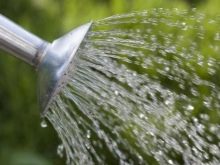
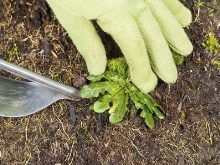

Reproduction
As a rule, the reproduction of the plant in question is carried out by vegetative division of the bush. This agricultural technique is very popular among many flower growers. Usually this operation is performed in the spring or fall seasons. If the age of the bush has already reached 4 years, then you can proceed to its first division. For this purpose, the plant must first be dug up. In this case, the root system must not be touched in any case, so as not to accidentally damage it. After that, the bush can be divided into separate segments. Echinacea is a simple breeding method by seed. For sowing seeds, the optimum temperature is 13 degrees Celsius. Better to act in the spring. It is enough to sprinkle the planted seeds with a layer of earth. However, this breeding method is bad in that the seedlings will react poorly to climatic changes in the future.
For growing seeds, it is better to use special tanks. The seeds must be buried in a suitable substrate at least 5 mm. The seedlings will not form quickly as they will only germinate after 6 weeks. Next, the finished seedlings are transferred directly to the open ground. Flowering will come only from the second year. Echinacea can also propagate through cuttings. For this process, it is necessary to use only healthy and as strong stems as possible. Cuttings must be trimmed so that 2 leaves remain on each of them. After this, the sections must be treated with a special stimulating agent so that root growth is accelerated. Further, the cuttings can be planted in fertile and nutritious soil. The latter must be moistened in sufficient quantities.
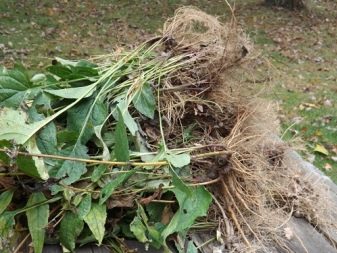
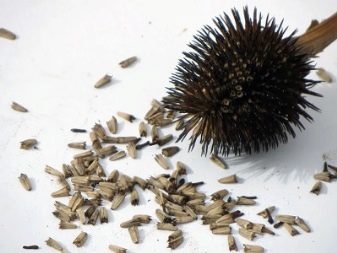
Diseases and pests
Echinacea is a plant that is not susceptible to various diseases. However, culture can still get sick. As a rule, this happens due to improper nursing operations.
- Dangerous powdery mildew manifests itself if the plant is in conditions of sharp temperature jumps.
- Excessive overfeeding with nitrogen is possible. Because of this, characteristic whitish spots are formed on the flower. In this case, echinacea must be sprayed with a colloidal mixture.
- Often, Echinacea gets sick with cercosporosis or septoria.
- Uncharacteristic spots may form on the leaf blades of a flower. Because of this, after a while, the foliage dies and falls off.
- If ailments of a viral nature occur, the peduncles lose their regular shape, and the leaves turn yellow.
Initially, all diseased and damaged leaves should be cut off. If the disease progresses further, then it is advisable to treat the flower with fungicides. In this case, the site will need to be disinfected using a strong solution of potassium manganese.
Sometimes slugs or bugs appear on the bushes. To get rid of them, insecticidal agents are used (Actellik is suitable).
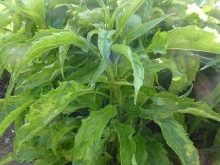
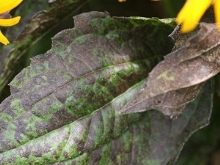
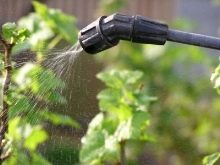
Use in landscape design
- Echinacea is a plant that landscape designers love. The flower effectively decorates the adjoining areas. It can be used as a single or group landing.
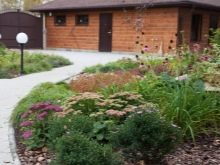
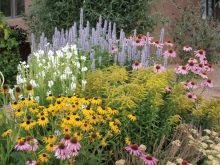
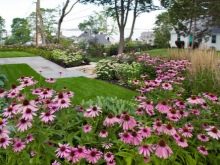
- Most often, people grow echinacea in the garden in a neat flower bed. By means of a flower, you can emphasize the advantages of the landscape, or you can hide many of the existing shortcomings. In flower beds of small height, Echinacea can be safely planted in the background, but most often the culture occupies the middle tier.
Echinacea goes well with many other perennials. Its low varieties are effectively combined with taller perennial plants: fennel, meadowsweet, mountaineer, steep sap.

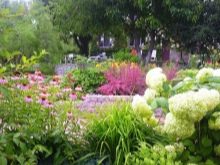








































































































The comment was sent successfully.